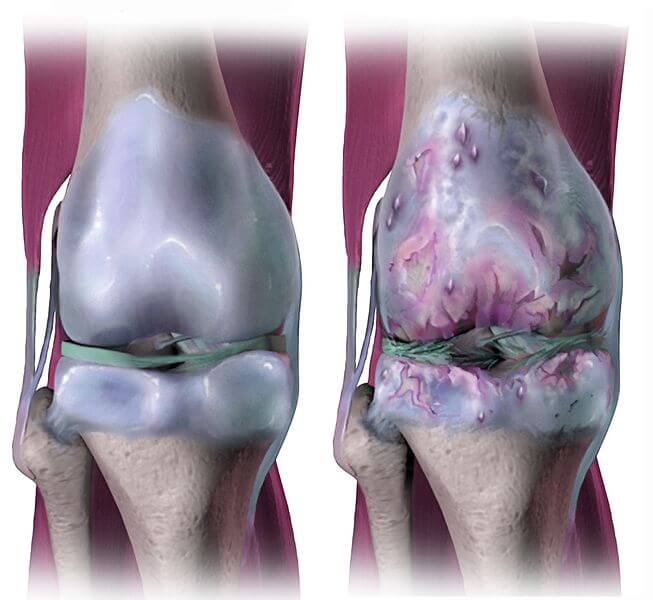How do you know when to euthanize a dog with arthritis? Monitor their pain management and mobility – if it’s too much for them, it may be time.
Watching a beloved dog struggle with arthritis can be heartbreaking. As their caregiver, you want to do everything possible to ensure they live a comfortable and happy life. However, when arthritis pain becomes unmanageable and significantly hinders their mobility and enjoyment of life, making the decision to euthanize might be the kindest choice.
While it’s a difficult decision, understanding the signs and factors to consider when assessing their quality of life can provide guidance in determining when euthanasia may be the most compassionate option for your furry friend.
Recognizing The Signs
Recognizing the signs of when to euthanize a dog with arthritis is a crucial and emotional decision for pet owners. Managing their pain and monitoring their mobility are essential aspects to consider. Below, we will delve into the details of Pain Management Assessment and Mobility Monitoring to help guide this difficult decision.
Pain Management Assessment
Assessing the pain levels in dogs with arthritis is imperative. It involves evaluating how effectively medications and treatments alleviate their discomfort. If their pain becomes unbearable and significantly affects their quality of life, euthanasia might be considered to prevent further suffering.
Mobility Monitoring
Observing the impact of arthritis on a dog’s mobility and daily activities is crucial. It is important to keep a close eye on their ability to move and engage in regular activities such as walking and playing. If arthritis severely limits their mobility and independence, it may be a sign that euthanasia is a compassionate option to consider.

Credit: toegrips.com
Understanding End-stage Arthritis
When considering when to euthanize a dog with arthritis, factors to consider include how well the dog’s pain is managed with medication, the impact on their mobility and ability to engage in daily activities, and whether it is becoming too much for them to handle.
Loss Of Cartilage Symptoms
End-stage arthritis in dogs is a condition where there is a significant loss of cartilage in the joints. As a result, the bones rub against each other, causing immense pain and discomfort. Dogs suffering from end-stage arthritis may exhibit symptoms such as:
- Restriction of movement due to pain
- Visible difficulty while walking or performing daily activities
- Inability to rise or lie down comfortably
- Limping or favoring certain limbs
It is essential to keep a close eye on your dog’s behavior and consult with a veterinarian if you notice these symptoms. While managing pain through medications and treatments can help, there may come a point where euthanasia becomes a consideration to alleviate their suffering.
Restricted Range Of Movement
Loss of cartilage in end-stage arthritis also leads to a severely restricted range of movement for dogs. Due to the pain and discomfort, they may find it challenging to perform even basic movements. You may observe signs such as:
- Becoming restless when standing or sitting due to pain
- Reduced ability to climb stairs or jump onto furniture
- Reluctance to engage in physical activities they previously enjoyed
- Inability to stretch or flex certain joints
These limitations can significantly impact their quality of life and overall well-being. It’s important to assess how arthritis affects your dog’s mobility and consider if their restricted range of movement is causing them significant discomfort. In such cases, euthanizing may be a compassionate option to prevent any further suffering.
When deciding whether to euthanize a dog with end-stage arthritis, it’s crucial to assess multiple factors, including pain management, mobility, and the overall enjoyment of life. Consulting with a veterinarian who specializes in pain management and end-of-life care can provide invaluable guidance during this difficult decision-making process.
Effective Pain Relief Methods
When determining when to euthanize a dog with arthritis, consider the effectiveness of pain management and the impact on their mobility and daily activities. If their pain becomes unmanageable and their mobility severely affected, peaceful euthanasia may prevent further suffering.
It’s a difficult decision, but essential to consider the dog’s enjoyment of life.
Medication Options
Explore various medications to relieve your dog’s arthritis pain effectively:
- Gabapentin: Helps manage pain and discomfort.
- Tramadol: Provides relief for moderate to severe pain.
- Methocarbamol: Acts as a muscle relaxant in pain protocols.
Adequan Injections
Adequan® injections, performed by a veterinarian, offer effective relief:
- Benefits: Helps reduce inflammation and increase joint lubrication.
- Usage: Administered in a series of injections for optimal results.
- Impact: Improves joint function and overall mobility in arthritic dogs.
Supporting Your Dog
Deciding when to euthanize a dog with arthritis can be a difficult decision. You should consider how well their pain is managed with medications and treatments, as well as the impact on their mobility and daily activities. If the pain and loss of mobility are too much for them to handle, euthanasia might be a compassionate option to prevent further suffering.
Veterinary Guidance
Getting veterinary guidance is crucial when determining whether to euthanize a dog with arthritis. A veterinarian will assess the dog’s overall health, pain management, mobility, and quality of life. They can provide insight into the dog’s condition and help make an informed decision based on their professional expertise.
Enhancing Quality Of Life
Enhancing the quality of life for a dog with arthritis can help delay the decision of euthanasia. Various treatments and interventions can be implemented to improve their comfort and well-being. Medications such as gabapentin or tramadol can help manage pain, while muscle relaxers like Methocarbamol may be added to pain protocols. Additionally, Adequan injections can reduce inflammation and increase joint lubrication. It is essential to observe how arthritis affects the dog’s mobility. If the dog’s ability to move, walk, or perform daily activities becomes significantly limited, it may be an indication that euthanasia should be considered. Owners should pay attention to any restlessness or signs of pain and discomfort when the dog is standing. Aside from physical well-being, it is essential to assess the dog’s enjoyment of life. If the dog’s arthritis severely impacts their mobility and independence, compromising their ability to engage in activities they once enjoyed, it might be time to consider letting them go peacefully. Remember, the decision of when to euthanize a dog with arthritis is a deeply personal one and should be made in consultation with a veterinarian. They can offer guidance and support during this difficult time, ensuring that your dog’s best interests are prioritized.
Considering Euthanasia
End-of-life decisions for dogs with arthritis revolve around pain management and mobility issues. Watch for signs of limited movement and distress to determine when euthanasia may be necessary. Consulting with a veterinarian can provide guidance on making this difficult but compassionate choice.
Impact On Mobility
One crucial aspect to consider when deciding whether to euthanize a dog with arthritis is the impact on their mobility. Arthritis can severely affect their ability to move, walk, or engage in their daily activities. They may struggle to climb stairs, jump onto furniture, or even walk short distances. It’s important to observe how arthritis is hindering their mobility and consider if their condition is worsening despite pain management and treatment.
Quality Of Life Assessment
Another important consideration in the decision to euthanize a dog with arthritis is conducting a thorough assessment of their quality of life. Although pain management may provide relief, it’s essential to evaluate if the dog is still able to enjoy their life to the fullest extent possible. Factors to evaluate include their overall happiness, engagement in activities they previously enjoyed, and their ability to socialize with family and other pets.
If their arthritis has progressed to a point where they can no longer participate in activities they once loved and their pain is unmanageable, euthanasia may be considered the most compassionate choice to prevent further suffering.

Credit: www.bulldogology.net
Alternatives To Euthanasia
When faced with the difficult decision of whether to euthanize a dog suffering from arthritis, it’s crucial to explore alternative options that may help improve their quality of life.
Other Treatment Options
Exploring other treatment options beyond euthanasia can provide hope and relief for dogs struggling with arthritis.
Stem Cell Therapy
Stem cell therapy is a promising alternative for dogs with arthritis, offering regenerative benefits that can reduce pain and improve mobility.
Other potential interventions include:
- Physical therapy to maintain muscle strength and flexibility
- Weight management to reduce stress on joints
- Acupuncture or massage therapy for pain relief
Consulting with a veterinarian who specializes in arthritis treatment can help tailor a comprehensive plan that addresses the unique needs of your furry companion.
By exploring these alternatives to euthanasia and staying informed about the latest advancements in arthritis management, you can ensure that your dog receives the care and support they deserve.
Decision-making Process
Deciding whether to euthanize a dog with arthritis can be a painful and emotionally challenging process for pet owners. It is essential to consider various factors that may affect the dog’s quality of life, pain management, and overall well-being. Understanding the decision-making process can help in making the best choice for the beloved pet.
Monitoring Pain Levels
Regularly monitoring the pain levels of a dog with arthritis is crucial. Observe their behavior and physical movements for signs of discomfort. Additionally, discuss pain management options with the veterinarian and consider if the current medications and treatments are effectively controlling the pain. If the pain becomes unbearable for the dog, euthanasia may be a compassionate decision to prevent further suffering.
Assessing Enjoyment Of Life
Assessing the dog’s enjoyment of life is an important aspect of the decision-making process. Consider their ability to engage in activities they once enjoyed, such as playing, going for walks, and interacting with family members. If the symptoms of arthritis have significantly diminished the dog’s quality of life and they are no longer finding joy in daily activities, it may be time to consider euthanasia as a humane choice to end their suffering.
Final Goodbyes
The decision to euthanize a beloved pet is never easy. When a dog with arthritis reaches the end stage of the disease, pet owners often face the challenging task of deciding when it’s time to say goodbye. Making this decision can be emotionally overwhelming, but it is an act of compassion and love to prevent further suffering for the dog. Below, we discuss how to prepare for euthanasia and ways to cope with the inevitable loss.
Preparing For Euthanasia
When contemplating euthanasia for a dog with arthritis, pet owners should consider several factors to ensure a peaceful and respectful goodbye:
- Pain Management: Assess how well the dog’s pain is managed with medications and treatments. If the pain becomes unmanageable, euthanasia may be the kindest option to alleviate their suffering.
- Mobility: Monitor the dog’s ability to move, walk, and engage in daily activities. Severe arthritis may significantly limit their mobility and independence, which can impact their overall quality of life.
Coping With Loss
Coping with the loss of a cherished pet is a deeply emotional process. To navigate this difficult time, here are some ways to cope with the impending loss:
- Seek Support: Reach out to understanding friends, family, or support groups who have experienced similar situations. Sharing your feelings and seeking comfort from others can provide solace during this challenging period.
- Making Memories: Cherish the final moments with your dog by engaging in activities you both enjoy. Creating lasting memories can help ease the grief and provide comfort in the future.

Credit: perthvetcare.com.au
Frequently Asked Questions
How Do I Know When To Euthanize My Dog With Arthritis?
If your dog’s arthritis pain is not well managed and becoming unbearable for them, euthanasia may be considered to prevent further suffering. Additionally, if arthritis significantly impacts their mobility and ability to perform daily activities, it might be time to consider euthanasia for a peaceful goodbye.
What Is End Stage Arthritis In Dogs?
End stage arthritis in dogs is when there is severe damage to the joints, causing bone to rub against bone. Dogs with end-stage arthritis may have limited movement and show signs of pain and discomfort. If their pain is not managed well with medications and treatments, euthanasia might be considered to prevent further suffering.
How Fast Does Arthritis Progress In Dogs?
Arthritis progression in dogs varies; it can be rapid or slow over time due to joint degeneration and inflammation.
What Is The Best Pain Relief For Dogs With Arthritis?
The best pain relief for dogs with arthritis includes medications like gabapentin, tramadol, and muscle relaxors, as well as Adequan injections. It’s essential to monitor their pain management and mobility and consider euthanasia if their suffering becomes too much.
Conclusion
When caring for a dog with arthritis, observe their pain levels and mobility. Making a decision about euthanasia should consider their comfort and quality of life. It’s a difficult choice but prioritizing your pet’s well-being is essential. Trust your instincts and seek guidance if needed to make the best decision.



